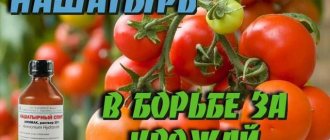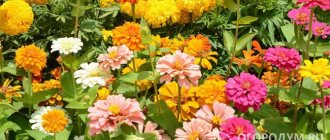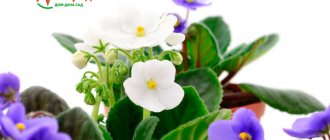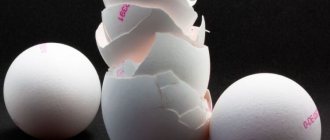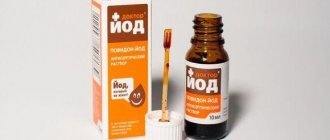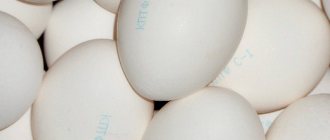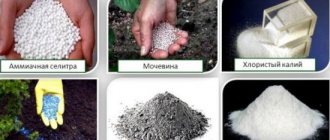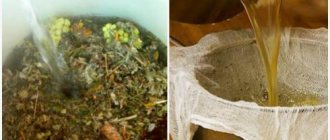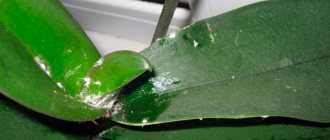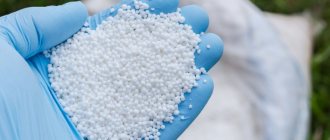Nitrogen is an essential element for the full growth and development of garden crops. However, plants do not actively absorb ammonia, an intermediate product of the natural nitrogen cycle. That is why its aqueous solution, that is, ammonia, is often absolutely irreplaceable for the garden.
The use of ammonia is sometimes more effective than traditional organics, which release nitrogen only after a long decomposition process. After all, ammonia begins to act immediately. In addition, this caustic chemical compound, when used correctly, easily repels most dangerous pests.
Why do you need ammonia fertilization?
Ammonia is rich in nitrogen, which is required for plants to grow green foliage. And the strong smell of the liquid will repel pests: mole crickets, aphids, wireworms, carrot and onion flies, ants, midges that hover around indoor flowers.
The following signs indicate nitrogen deficiency:
- Thinned stems;
- Poor foliage development;
- Falling of flowers, their early wilting;
- The leaves of the plant are pale or yellow below;
- Loss of resistance to frost in shrubs and fruit trees;
- The plant slows down in growth.
Attention! When using ammonia, be careful: inhaling the vapors may impair your breathing. Breed it outside or with open windows.
Ammonia for indoor flowers - use and dosage
When plants are planted in pots, soil rich in minerals sooner or later loses its beneficial properties, being washed away with each watering, and the flower requires constant feeding for full development.
There are specially developed complexes for certain types of flowers, mineral and organic fertilizers, as well as folk remedies that can extend the life of flowers and improve their appearance. One of the proven inexpensive and accessible means is ammonia, which can be bought in the form of a solution at the pharmacy and successfully used to feed indoor flowers.
How to get the concentration right
Despite the fact that this liquid is not dangerous for plants, when preparing the mixture, the proportions of ammonia and water must be observed. In order not to be too clever or if you are afraid of overfeeding, water the plantings with a mixture of medium concentration. How to prepare it: dissolve 20 ml of 10% ammonia in 10 liters of water.
If you see clear signs of nitrogen starvation, then you can prepare a solution of the highest strength: pour 50 ml of ammonia per 10 liters. To prepare a high-dose drug, pour 25 ml of ammonia into a bucket of water.
Minimum dosage for feeding: add 10 ml of the drug to a bucket of water.
Memo to vegetable growers and gardeners! If you fertilize the plantings with ammonia, then other nitrogen fertilizers cannot be used so as not to build up excess green mass.
Ammonia is applied in warm weather early in the morning or in the evening. Hypertensive and hypotensive patients should be especially careful.
Ammonia is a volatile substance, so add a little apple cider vinegar or citric acid to the solution. Acidified ammonia evaporates less and really helps plants grow green mass.
Beneficial features
Ammonia is a transparent substance with a very pungent and pungent odor. This smell is provided by ammonia, and most often its concentration is 10%. A similar composition can be purchased at any pharmacy. There is also ammonia with a 25 percent concentration, but such preparations are rare. Ammonia gained popularity in gardening due to its high nitrogen content.
This substance is extremely important for all plants, as it allows them to grow green mass in the shortest possible time.
Here are some useful properties of ammonia:
Gardeners also love ammonia because such fertilizing is absorbed by plants exactly as much as needed. This is very important, because excess nitrogen causes the plant to spend all its energy on mass growth, and there is no energy left for flowers, ovaries, and fruits. This will not happen with ammonia, but remember that if you give too much concentration, the roots of the plant may get burned.
Which plants can be fed with nitrogen?
- A medium concentration solution can be used to feed eggplants, zucchini, cabbage, pumpkin, rhubarb, and peppers.
- For fruit and berry bushes - plum, cherry, blackberry, raspberry, it is enough to pour a low concentration mixture under the root.
- A solution of medium and low dosage can be used to water cucumbers, tomatoes, garlic, corn, carrots, beets, apple trees, gooseberries, and currants.
- Radishes, onions, and pears will respond well to watering with a low dosage solution.
Before watering with ammonia, the plants should first be watered with plain water. Do not use this substance more than once a week, and start feeding with a small dosage.
Bottom line
Ammonia is a universal fertilizer suitable for most garden crops. Compared to other nitrogenous fertilizers, it is completely harmless to humans and domestic animals, and also serves as both a feeding agent and protection against pests.
Despite the benefits, excess nitrogen negatively affects plant growth. Therefore, do not carry out preventive feeding more than once a week, and to treat plants, use low concentrated solutions, increasing the dosage over time.
How to strengthen tomato seedlings
To strengthen tomato seedlings, now is the time to fertilize with ammonia. Dissolve 1 tsp. ammonia in a bucket of water, pour the bushes at the root.
If you notice a wireworm or mole cricket on the site, then when planting seedlings in the ground, pour 0.5 liters of a medium-strength preparation into each hole.
After the tomato bushes are planted in the greenhouse, after 5-6 days, spray the “migrants” with a low-dose solution.
Organize the next spraying during flowering time to strengthen the tomato flowers. The next feeding will be useful for tomatoes when you harvest your first crop.
Experienced vegetable growers advise: for better fruit ripening during the autumn cold snap, spray the tomatoes with a weak ammonia solution.
Take the following precautions when using this drug:
- Prepare the solution outside.
- Do not inhale vapors of the substance.
- Use protective equipment: glasses, a respirator, a plastic apron and latex gloves.
Precautionary measures
Ammonia in high concentrations is dangerous and can cause negative reactions in humans, animals and plants. Prolonged inhalation of ammonia vapor leads to burns of the mucous membrane.
When processing or feeding indoor flowers with ammonia, follow the safety rules:
Nitrogen fertilizer in the form of ammonia is an accessible, inexpensive and high-quality plant food, to which not only indoor but also garden flowers respond with gratitude.
Ammonia fertilizer for cucumbers
Spring feeding with ammonia is very useful for cucumbers. As soon as the shoots grow to a height of 15 centimeters, carry out the first fertilizing with the minimum dosage of the drug. Then it is recommended to carry out such work once a week.
When the borage begins to form buds, the bushes will benefit from watering with the mixture: 10 ml of ammonia per 10 liters of water. If the foliage turns yellow early, water the plants once with the following mixture: 25 ml of ammonia per bucket.
If you notice that the cucumbers are beginning to grow green mass, but are not blooming much, then do not feed them with nitrogen anymore. The same recommendation applies to other vegetable crops - eggplants, peppers, tomatoes.
Pest control product
Not only does ammonia have an unpleasant odor that repels insects, but it is also a toxic substance that can truly fight pests .
Fertilizing already allows you to achieve the desired effect, but you can also carry out separate insecticidal treatment against specific harmful species. Ammonia best in the fight against ants and wasps.
Ants and wasps can cause enormous damage to fruits, but, fortunately, they cannot tolerate the ammonia smell even in minimal concentrations. Thus, with the help of ammonia you can protect fruit and berry crops. To ensure that volatile ammonia remains on the surface, fatty acids contained in soap are used. The solution is prepared as follows:
- Grate laundry soap (100 or 200 grams is enough). If you don’t have laundry soap, baby soap will do.
- Pour the grated soap into a liter of distilled water and wait until completely dissolved .
- Pour soapy water into a bucket of plain water in a thin stream, stirring continuously until gray flakes stop separating and soap bubbles appear on the surface.
- As soon as this stage is reached, you can immediately, without precautions, pour the remaining soap solution .
- ammonia there . If the concentration is less than 25%, you need to recalculate the required dose per bucket.
- Use the prepared mixture immediately.
Although ammonia does not accumulate in plant tissue, it can remain on the surface of fruits. But I think everyone knows that you need to wash fruits and vegetables before eating.
In addition to fighting ants and wasps, ammonia protects the garden from the following pests :
- Weevil. Solution according to recipe No. 4, water once a week until results appear;
- Onion/carrot fly. Solution No. 4, pour once into the space between the rows;
- Medvedka. For prevention, water the cabbage ( a solution of a milliliter of ammonia to a liter of water) when planting at the rate of half a liter per hole;
- Fruit fly. Recipe No. 5, once;
- Wireworm. Solution No. 5, the same as for the mole cricket. Watering at the rate of half a liter per bush;
- Secretive proboscis. Recipe No. 3. The first treatment is after the arrows appear, the second – two weeks after the first.
- Aphid . Treatment with a solution against ants and wasps. Once is enough, but if necessary, you can spray the plants again after two weeks.
Ammonia for processing strawberries
An ammonia preparation is not suitable for fertilizing strawberries, but to protect against diseases and pests, gardeners use ammonia.
During the season, he recommends carrying out three treatments with ammonia:
- The first time should be treated in the spring when tender young leaves appear. The solution is prepared as follows: 10 liters of water, 40 ml of alcohol, a piece of laundry soap. Water the bushes from above so that the solution gets onto the leaves, stems, and also into the soil. This type of watering will kill all pests that have overwintered in the soil. After 2-3 days, water the plants with plain water.
- After flowering, the following treatment will be required: 3 tbsp. spoons of alcohol into a bucket.
- To prepare the bushes for winter, prepare a mixture for watering strawberries: pour 40 ml of ammonia into a bucket of water, add 5 drops of iodine.
Ammonia for flowers: benefits and methods of use
Ammonia is a popular pharmaceutical drug widely used in medicine and everyday life. It is also useful for plants, including flowers. We will consider the features of using such a tool below.
Is ammonia good for garlic and onions?
Not all gardeners know that ordinary ammonia will help stop the yellowing of garlic. Garlic is precisely the crop that suffers more than others from a lack of nitrogen in the soil. Ammonia will help him, the compounds of which garlic absorbs well.
If you are planting spring garlic, then water the entire bed with the solution after planting. When the first feathers appear, do this work again. Then, every 2 weeks, water with this solution: 1 tbsp. alcohol in a bucket.
Winter garlic is watered when the outside temperature is plus 15 degrees, then the garlic will better absorb nitrogen. In the future, it is fertilized when you notice that it is developing poorly, the feathers become thin and pale. Also dilute 1 tbsp. alcohol in a bucket.
Spraying should be carried out during the summer. Dilute 30 ml of the drug in a bucket of water. This way you will feed the plants and also rid the garlic of pests. If you know that the soil is very poor, then dilute 4 tbsp. l. ammonia per 10 liters. If the garlic grows in good soil and the feathers do not turn yellow, you need to feed it once a month.
Carry out the work in the evening so that the sun does not burn your crop. Stop watering garlic 2-3 weeks before harvest.
Ammonia (ammonia) for plants: watering and fertilizing, how to dilute?
The use of ammonia, and with the addition of water - popularly ammonia, has long been popular among housewives both at home and in the garden.
At home it is used as:
And this is not all the positive aspects of ammonia. And amateur gardeners use ammonia as:
In this article we will talk about the use of ammonia in the garden, and consumer reviews will also be listed here.
Benefits and harms of using ammonia for plants
Signs of land poverty:
Ammonia as fertilizer
It is at the pharmacy that only 10% ammonia is available for sale, but some advice from gardeners contains ammonia 25% and this is not the same thing.
Ammonia containing 25%? This:
To increase the effect of the drug, you must follow the following rules:
What plants benefit from ammonia?
Ammonia is equally useful for both home flowers and garden crops. Only the dosage should be followed to obtain the desired result.
Any gardener and summer resident is pleased to receive a large harvest with large fruits. Unfortunately, it is not always possible to obtain the desired result.
Plants often lack nutrition and useful minerals
In such cases, our readers recommend using the innovative BioGrow biofertilizer.
It has the following properties:
Read more about it here >>
For cabbage
Cabbage differs from other crops in the volumetric consumption of nitrogen in the soil. In order to comply with this point, it is necessary to fill the soil with nitrogen in 2 stages:
For strawberries
Strawberries are processed only to protect against:
As soon as normal temperature has been established, it should be treated 2-3 times throughout the summer.
Instructions for use:
For indoor plants
Indoor plants are more susceptible to action, so you need to water them with caution, otherwise you can ruin the crop. To do this, apply a weak solution of 1:3, where 3 parts are water. Treatment is carried out only before flowering or after.
There are several rules to follow when processing flowers:
Stories from our readers! “I am a summer resident with many years of experience, and I only started using this fertilizer last year. I tested it on the most capricious vegetable in my garden - tomatoes. The bushes grew and bloomed together and yielded more than usual. And they didn’t suffer from late blight, that’s the main thing.
Fertilizer really gives more intensive growth to garden plants, and they bear fruit much better. Now you can’t grow a normal harvest without fertilizer, and this fertilizing increases the amount of vegetables, so I’m very pleased with the result.”
For onions and garlic
For cucumbers
Cucumbers will delight you with a bountiful harvest if:
For seedlings
Seedlings have a beneficial effect on watering of this type. If you water the seedlings twice a week, then:
Let's celebrate! Before planting the seedlings themselves, you can disinfect the container itself, which will protect against diseases and pest invasions.
For garden flowers
In the garden, flowers can also be treated. Experts recommend doing the following three times during the summer:
These flowers can also be processed with a bud, this is not dangerous.
For tomatoes
Tomatoes need to be processed only if growth and development are weakened. The optimal size would be half a tablespoon per half liter of water. As soon as growth resumes, watering should be stopped.
Ammonia for pests
As mentioned above, ammonia is a two-in-one product, one of which is a fertilizer, the other protects against disease and pests.
Pests include:
Let's celebrate! Most pests react negatively to odors that humans may not be able to detect by smell. Unfortunately, ammonia tends to evaporate quickly, which allows it to have less effect. But there are secrets that make it last longer, these include soap, and it must be used together with a processing solution.
Precautionary measures
Naturally, we should not forget that ammonia is a poison and, if it gets into the respiratory tract too much, it can have a detrimental effect in the form of a burn to the mucous membrane.
But in order to prevent this from happening it is necessary:
If after using the product you experience side effects such as:
Note! It is necessary to urgently consult a doctor or call an ambulance to find out the cause of such consequences.
Reviews about the use of ammonia
Ammonia has a place in first aid kits to revive a person in case of loss of consciousness, but in this article we told you how else you can use the drug. Naturally, every flower loves care, like any other plant.
Let's celebrate! And if you provide proper care for flowers, they can please you with fragrant buds, and in turn, vegetables and fruits will delight you with the amount of harvest. What are the benefits of ammonia for plants and how to use it correctly? Link to main publication
Benefits for onions
Ammonia is also good for onions. If you grow for greens, then spray - 0.5 tbsp. for 10 liters of water. The same work is carried out when yellow feathers appear, but only take 45 ml per 10 liters of water.
To get strong heads, dissolve 15 ml of the drug in a bucket, then water not from above, but into the hole between the rows, so that the fertilizer goes to the onion heads, not the greens.
Water once every ten days. 2 weeks before harvesting, such work must be stopped. To obtain large heads, spraying is carried out twice with a break of 7 days. It has been verified that the taste of garlic and onions does not deteriorate at all.
Have you noticed how the onion feather begins to lighten and stripes form on it? To prevent this from happening, water the onion plantings in the first half of summer with the mixture (1 tablespoon per bucket of water). Once a week is enough.
By the way, in order to scare away all its pests from cabbage, spray the leaves at the very beginning of the growing season with this solution (10 ml per 10 liters of water plus the addition of liquid soap).
Ammonia - as a fertilizer in the garden
Nitrogen, as a chemical element, is extremely important for the development and growth of plants, especially at the beginning of the growing season. It affects all vital processes in the plant - nutrition and metabolism. It is an important component of cells, amino acids, chlorophyll, plant hormones, and vitamins. And at the beginning of development, a young plant especially needs nitrogen. Special nitrogen compounds are necessary for good growth of seedlings and leaves. Plants that receive enough nitrogen have beautiful green leaves and develop better. Over time, the need for this microelement decreases, and phosphorus-potassium fertilizers come to the fore.
The role of nitrogen is that it directly affects the quality and quantity of the crop. Judge for yourself, you are unlikely to get a good harvest from a bad and stunted plant. Therefore, starting from early spring, it is necessary to worry about what the harvest will be like by autumn. And if for some reason you cannot provide fertilizing with organic or mineral nitrogen fertilizers, ammonia will come to your aid.
The pungent odor of ammonia is extremely unpleasant for pests. Therefore, aqueous solutions will help get rid of such malicious insects as aphids, secretive proboscis, ants that carry aphids, as well as mole crickets, Colorado potato beetles, etc.
However, caution must be exercised when working with ammonia solutions. Since this is a toxic volatile substance, when inhaled, the product causes severe irritation and even burns of the mucous membranes; it is necessary to work with it in respirators or in the open air. Remember also that this is an explosive substance and should only be diluted away from open sources of fire.
Features of feeding bell peppers
Vegetable growers plant quite large pepper plantations on the plot, so much so do the owners of their summer cottages fall in love with it. When growing this crop, you should take into account the peculiarities of caring for it. First of all, disturb the weak root system of peppers less. Carry out loosening only between the rows, away from the bushes.
When planting in place, do not bury the root collar so as not to interfere with the growth of peppers. To make sure it grows healthy, feed it with nitrogen. You can tell about the deficiency of this element by looking at the leaves. They lose their healthy shine, become small, too pale.
Ammonia will solve several problems of peppers at once:
- It will prevent acidification of the soil caused by the application of manure, as well as rotting of weeds.
- The released carbon dioxide will combine with water, turning into carbonic acid. The acid reacts with calcium and magnesium, and water carries these elements to the roots.
- It will help the formation of green mass, enhance the growth of stems, and therefore for abundant fruiting.
- Will get rid of diseases and pests. The weevil will disappear if the peppers are watered with a solution (50 ml of alcohol per bucket) for 7 days. The wireworm will disappear if you pour 0.5 liters of solution (10 ml per 1 bucket) under each bush.
How to properly process peppers:
1 First watering of seedlings at the root after the appearance of the fourth leaf (1 teaspoon of 25% solution per 1 liter of water).
- After planting in the ground, also water at the root (3 tablespoons per 1 bucket of water).
- To spray the bushes, prepare a solution - 50 ml of ammonia per 1 bucket. Most of the ammonium evaporates, repelling slugs and enhancing plant growth.
Application as fertilizer
As mentioned above, ammonia can either be sprayed on plants or watered . The composition of the solution will depend not only on the purpose of processing , but also on the chosen method:
- 1 tbsp. spoon of concentrated solution per 1 liter of water (maximum dose). Used at the first sign of nitrogen deficiency as an emergency aid ( watering ).
- 3 tbsp. spoons of concentrated solution into a bucket of water (10 l). Used for fruit and vegetable crops ( irrigation ).
- 25 ml (≈2 tablespoons) per bucket of water. Used for flowers and bulbous vegetables ( watering ).
- 50 ml (≈4 tablespoons) per bucket of water (10 l). Used for vegetables (spraying).
- 1 teaspoon per 1 liter of water. Used for seedlings ( watering ) and fertilizing flower crops (spraying).
For seedlings
First you need to process the seedling containers. This will protect the crops from pests ( ants , wasps) and fungal diseases. Two weeks after picking, when the second pair of true leaves appears on the seedlings, they need to be watered with a solution prepared according to recipe No. 5.
For onions and garlic
Before planting, prepare a solution according to recipe No. 2 and use it at the rate of half a liter per hole. When the plants start to shoot, you need to wait a week and then spray them with solution No. 4 every day. There may be too much nitrogen. An excess will be indicated by a change in the color of the foliage: it becomes dark and glossy. In this case, you need to stop spraying. Also, if onions are grown not for feathers, but for bulbs , only two or three sprayings are carried out, and then they switch to watering with solution No. 3.
For cucumbers and nightshades
The first feeding is carried out 3-4 days after planting with a solution according to recipe No. 2. During the period of bud formation and flowering, foliar feeding with solution No. 4 will be required.
For flowers
For flowers, ammonia prepared according to recipe No. 1, 3 or 5 is suitable. Annual flowers are watered before planting in the same way as onions and garlic. Perennials are watered after the leaves bloom. Before the buds appear, the plants are sprayed with solution No. 5 once every two weeks. If few buds are formed, water No. 3. A week later, watering . If a lack of nitrogen appears during the flowering period, you need to use solution No. 1, after watering the plants with plain water.
For strawberries
In this case ammonia is used as soon as the leaves bloom (recipe No. 2), then the plantings are treated every two weeks (recipe No. 3). In both cases, you need to water the space between the rows, preferably at sunset.
Advice! There is a universal feeding recipe that is suitable for all fruit and vegetable crops. To prepare it, you need to dilute 50 milliliters of ammonia in 4 liters of water. For a weaker concentration, use a tablespoon per bucket of water, and for the strongest concentration, use a teaspoon per liter.
water once a week weakly concentrated solution . If necessary, increase the dose.
Watch the video! Ammonia for the garden and vegetable garden
Ammonia for flowers
Every summer resident must have flowers growing on his plot. Fertilizing with ammonia will also be useful for flowers. Flower growers recommend spraying when the flowers begin to fill buds. Pour 1 teaspoon of ammonia per liter.
In order for perennials to go into winter prepared, it is recommended to feed them at the root with the same solution.
The leaves are sprayed with a mixture consisting of one liter of water and a teaspoon of ammonia. Fertilizing is carried out after the leaves appear and during the formation of buds. Experienced gardeners prepare perennial garden flowers for winter by fertilizing them with ammonia.
Zinnias, peonies, dahlias, violets, nasturtiums, and clematis love a high concentration solution. And annual and bulbous flowers tolerate watering well in small dosages.
How is ammonia useful for plants?
The main nutrients for plants are 3 elements: potassium, phosphorus and nitrogen. They perform the following functions:
- Phosphorus helps green crops develop, increases their protective properties, has a positive effect on the root system, and colors flowers in different colors.
- Potassium provides the flower with moisture, helps in photosynthesis, and regulates gas exchange.
- Nitrogen controls the life processes of plants, is responsible for the growth of green parts, and is present in chlorophyll.
Ammonia is an ammonia solution, that is, it is a compound that contains nitrogen (NH4OH - ammonium hydroxide). It has a distinct odor, has antibactericidal and antifungal properties, neutralizes acid, and is transparent.
Ammonia has an advantage over purchased nitrogen-containing fertilizers, since they contain nitrates that can accumulate in fruits.
Features of rose processing
When the rose bushes are freed from winter shelters, be sure to water them with an ammonia solution. Signs of nitrogen deficiency in the soil:
- Last summer the roses did not bloom so magnificently.
- If you have pruned the bushes in spring, then nitrogen will again be required to increase the green mass.
- Your roses suffered from pest infestations last season. Many of them have overwintered and are ready to attack flowers. Watering with ammonia will save you from this scourge.
- If the shoots grow sluggish and weak, then water twice a season.
So, you have removed the shelter, immediately prepare a solution for fertilizing the roots: 25 ml of ammonia per 10 liters of water. Then watch the bushes grow. If there is enough greenery, then you can simply spray it with this mixture: pour 1 teaspoon of ammonia per 1 liter. Carry out the work once a month.
Rose bushes are often attacked by aphids. To remove it, treat with an ammonia solution: add 50 ml of ammonia to 7 liters of water. Treat twice with a break of a week. To prevent the liquid from rolling off the bushes, grate a piece of laundry soap and dissolve it in warm water. Then add to the ammonia liquid.
Ammonia for indoor flowers dosage
Today we have prepared the most complete information on the topic: “Ammonia for indoor flowers dosage” with professional comments and links to useful literature. If you have any questions, you can ask them in the comments.
Many amateur gardeners use folk remedies when caring for plants. A proven and cheap remedy is ammonia for indoor flowers. The use of an affordable pharmaceutical product has a positive effect on many types of plants.
Useful properties of the substance for indoor plants
Ammonia is a colorless liquid with a specific, unpleasant odor of ammonia. Composition concentration – 10%. The drug is actively used not only by doctors (to bring an unconscious person to consciousness), but also by flower growers to care for plants at home, in the garden and vegetable garden.
The pharmaceutical product is a combination of ammonia gas and water. Ammonia contains 82% nitrogen. The pharmaceutical product is often used in floriculture, for processing and feeding garden, fruit and vegetable crops.
The component has a positive effect on indoor flowers:
An important advantage is that if the optimal concentration and frequency of applying a solution based on ammonia are observed, it is almost impossible to “overfeed” the plants.
Ammonia does not replace nitrogen fertilizers. You should not rely on a pharmaceutical product as a panacea in the fight against pests, chlorosis and other problems. A product with a strong ammonia smell can be used in optimal concentration, taking into account the type and age of indoor plants. Moderate dosage and suitable frequency of various types of treatment: spraying, watering, soil fertilization are useful for the growth and development of decorative deciduous and decorative flowering species.
Why and in what cases is it used?
Signs of nitrogen deficiency:
Compositions based on ammonia are used for several purposes:
Pharmacies sell a product with the smell of ammonia at a concentration of 10%. Some recipes for gardeners indicate a different strength of the product - 25%. The drug is sold in stores as a technical variety.
It is necessary to strictly monitor the concentration of the working solution so as not to prepare too “strong” a product. The recipes indicate the concentration of the starting product, the rules for preparing liquid for feeding and combating parasitic insects.
Ammonia is a cheap, affordable means for feeding plants in a green corner, greenhouse, greenhouse, open ground crops, shrubs and fruit trees. The composition is always on sale, the consumption is minimal, which significantly reduces the cost of growing plants of various types.
The effect of ammonia on plants and soil
Opinions about the appropriateness of use and benefits of the pharmaceutical product are mostly positive. Many amateur flower growers, vegetable growers and gardeners use ammonia when caring for plant crops of various types and genera.
The main benefit of the pharmaceutical product is associated with the high nitrogen content, which plants absorb only from the substrate. A deficiency of a useful substance leads to a decrease in the rate of photosynthesis and insufficient production of chlorophyll.
Warning! Excess nitrogen in the soil provokes active growth of green mass, often to the detriment of flowering. It is no coincidence that during the budding period the amount of nitrogen fertilizers is sharply reduced, including weakly concentrated compounds based on ammonia. During flowering, if fertilizing a specific type of indoor flowers is allowed, increase the rate of potassium and phosphorus, with a deficiency of which the buds are small and bright colors do not please the eye for long.
Before using a nitrogen-containing product for the first time, it is important to study the methods of use, find suitable recipes, and clarify the concentration of the drug for a specific purpose.
Ten important points:
If undiluted ammonia gets on your hands, it may cause chemical burns and skin irritation. Be sure to rinse the problem area with running water, pat dry, and consult a dermatologist.
For indoor plants, use a weak ammonia solution: take 1 tbsp per 3 liters of lukewarm water. l. ammonia. It is useful to water and spray many types of house flowers from the beginning of the growing season until autumn. Before using the working solution, it is important to clarify whether water procedures are suitable for a particular species. Some exotic plants, such as lithops or “living stones,” cannot be sprayed, otherwise the fleshy leaves will rot.
Be sure to take into account the rules and recommendations specified in the previous section to determine the optimal concentration. You will have to prepare a basin or bucket, medical gloves, a spoon for stirring the liquid, and a measuring cup.
As a nitrogen fertilizer
Feeding with ammonia, or more precisely, a solution based on a pharmaceutical composition, benefits indoor flowers. The product has a good effect when watering geraniums, indoor roses, zinnias, lilies, dahlias, violets, and nasturtiums. It is important not to overfeed the flowers, otherwise fungal infections will develop and excess nitrates will accumulate in the underground part.
The procedure is less popular than watering with diluted ammonia as a fertilizer. Not all plants respond well to a solution with a pharmaceutical product.
Control of parasites
Many pests are sensitive to the action of ammonia:
To repel small insects, it is enough to prepare a standard product (3 liters of water + a tablespoon of ammonia), spray the leaves and soil. Treatment frequency: 1 time every 7 days.
This product does not work well on large pests: the particles of the solution quickly evaporate, the smell is weak, and the parasites continue to attack indoor flowers. How to fix the situation? It is useful to prepare a warm soap solution based on laundry or liquid soap (10 l), add ammonia 10% (100 ml), apply to the leaves.
Possible harm and precautions
The main rule when using a pharmaceutical product is to do no harm. Improper use of ammonia, excess concentration, or refusal of nitrogen fertilizers can cause harm to plants.
It is important to adhere to safety measures, protect your hands and respiratory organs. Vapors of ammonia can lead to poisoning, and a strong solution can cause damage to the epidermis. Before starting procedures for watering and spraying plants, be sure to wear gloves and a medical mask, and treat indoor flowers in the fresh air.
Using diluted ammonia as a nitrogen fertilizer and repellent for parasitic insects has many positive aspects. It is important to know when to stop, adhere to the requirements, and use the working solution of the required concentration. Proper use of the pharmaceutical product strengthens indoor plants.
Video about the features of using ammonia as a fertilizer for indoor plants:
It doesn't matter whether you love garden plants or prefer indoor flowers, both need to be carefully cared for. And for this you can use not only specialized drugs, but also those that can be found at home.
One of the well-known remedies that is in any first aid kit is ammonia.
General rules for applying fertilizers
Lilies require feeding throughout the spring and summer.
There are many different varieties of lilies and they all need feeding equally throughout the spring and summer. These perennials take any fertilizer well, but specific fertilizers should be used at certain periods of plant development. It is worth considering that after adding dry granular products, you need to water the lilies abundantly, since the granules do not dissolve well if there is a lack of moisture. Liquid fertilizers are absorbed fairly quickly, but in large quantities they can cause burns. For this reason, the dosage recommended on the package should be reduced by a third.
Lilies planted in fertile soil can begin to be fed only 2 years after planting in open ground.
It should be borne in mind that an excess of nutrients for lilies is just as harmful as their deficiency. If the plant is overfed, its bulbs will begin to actively grow, and flowering will be sparse and short-lived.
